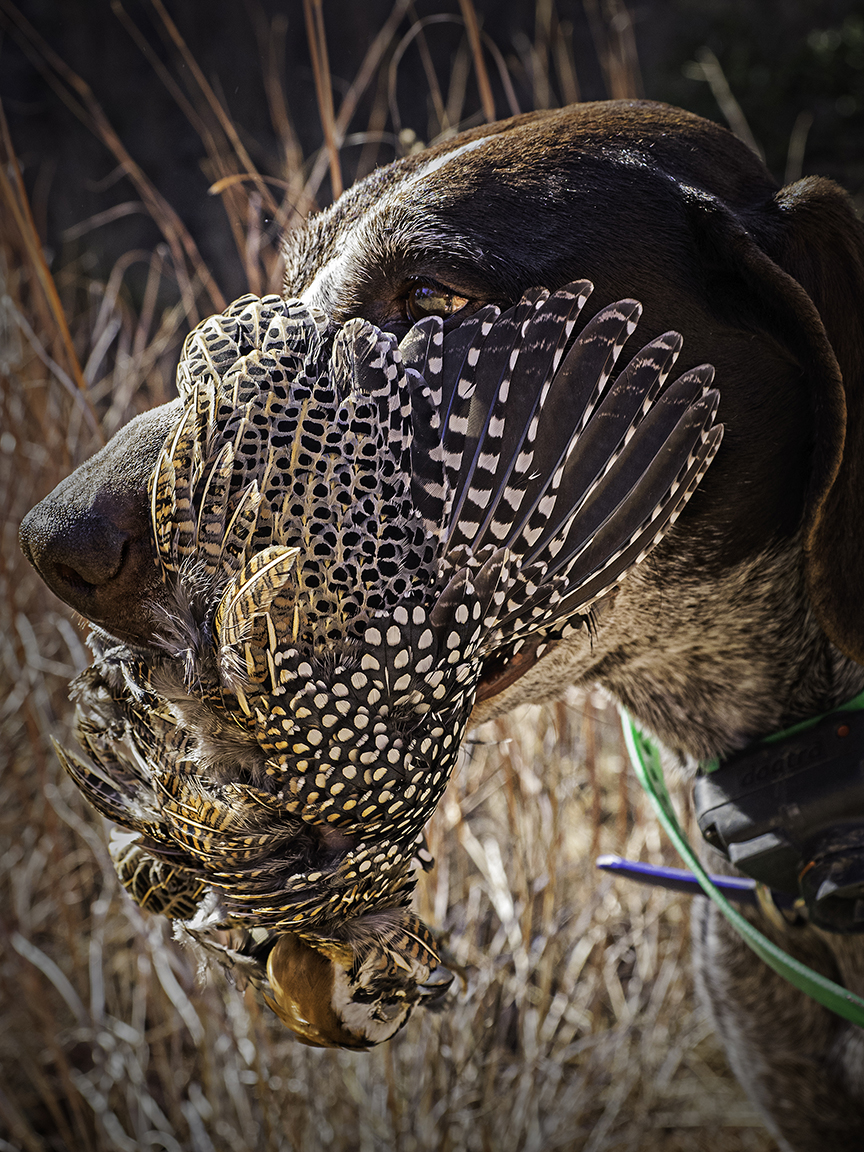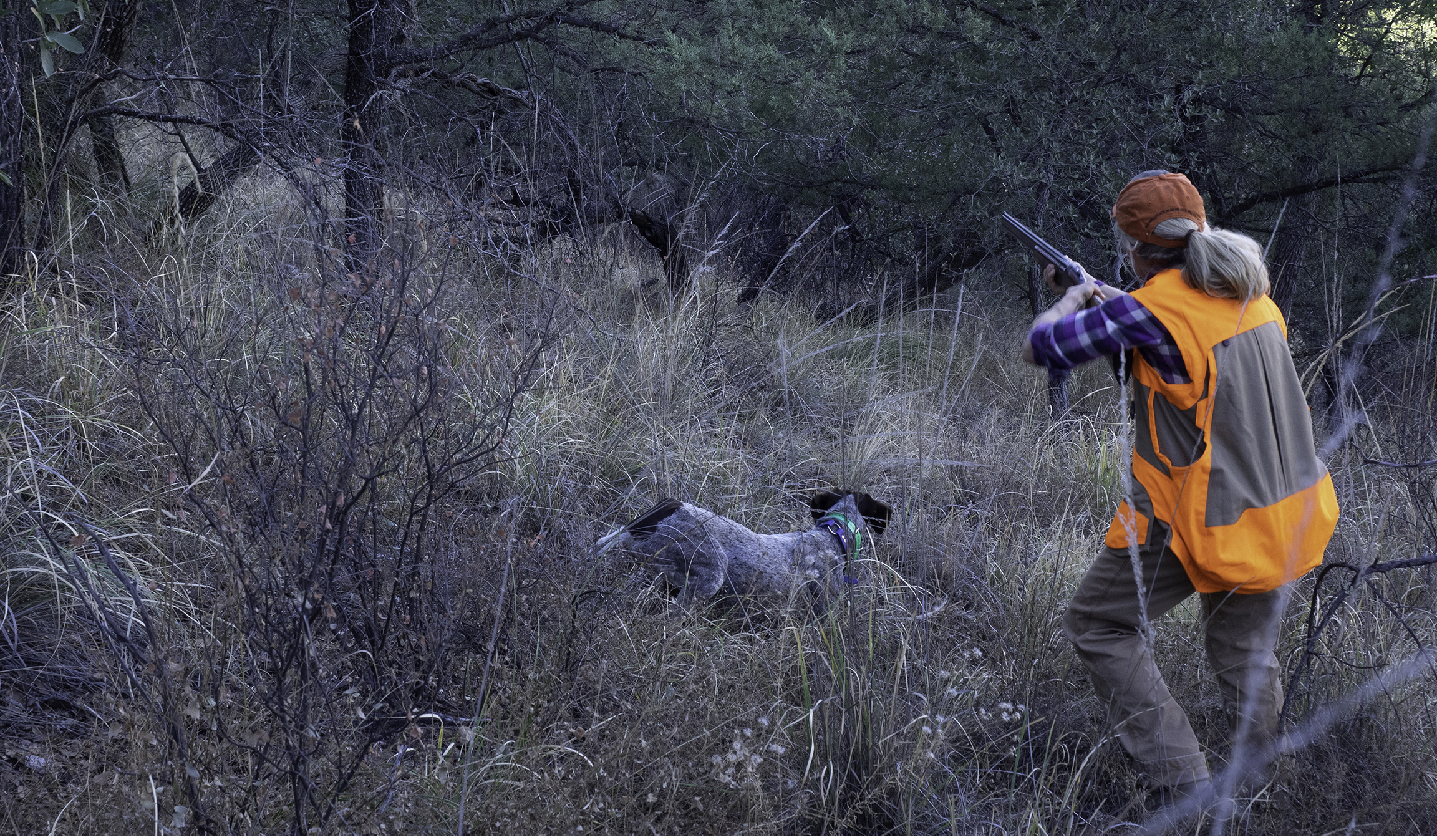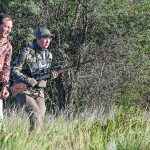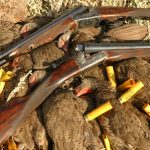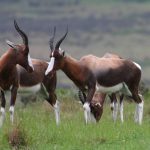Which upland game bird is the most challenging to hunt… and to hit?
Photo above: Lori Thomas is about to drop a Mearns quail over a point by her late German wire-haired pointer, Maggie. Tough shots in dense cover are typical for this species. Photo by Don & Lori Thomas
Superlatives can be tricky, especially when trying to name the best of anything, but we just can’t resist making the attempt. Greatest novel of the twentieth century? Best shotgun of all time? Babe Ruth or Wille Mays? No matter what the subject, two points are certain: Objectivity will be impossible, and controversy will be inevitable. If you don’t believe me, try telling a diehard Michael Jordan fan that LeBron is the best who ever played the game.
Here’s a question I have frequently debated over dinner with friends after a long day in the field. What is the most challenging upland gamebird in the country? I believe there are two components to the question: the demands of the terrain and the difficulty of hitting the bird on the wing. At the risk of inciting just the kind of controversy mentioned earlier, I’ll share some thoughts, if only to invite discussion.
There are certainly plenty of candidates to choose from. By my rough count, we are home to nearly two dozen varieties of upland game, including non-gallinaceous species like woodcock and snipe but excluding members of the dove family and outliers like the chachalaca and Himalayan snow cock. Some have a regional distribution, leaving them unfamiliar to many readers, but all are legal game somewhere. In other words, it’s a target-rich environment, no pun intended.
While these are purely personal opinions, some can be dropped from consideration at the outset. Turning first to our dozen grouse species, spruce grouse are easy to cross off the list because of their naivety, given that you can kill one with a stick (and I have). Ponderous on the wing and residents of flat, open terrain, sage grouse are so easy that I haven’t hunted them for years, never mind their shaky conservation status. Willow ptarmigan, our most widespread and abundant ptarmigan species, inhabit level ground and offer easy shots during the early season when most of us hunt them. (We’ll get to our other ptarmigan later.) Wary winter ptarmigan of any species are another story, but since most of us don’t do much hunting on snowshoes in sub-zero weather, I’ll ignore them. Perhaps my favorite prairie gamebirds, sharptails, hold wonderfully for pointing dogs, inhabit intermediate terrain, and offer close shots during the early season. Prairie chickens are one of just two American gamebirds I’ve never hunted so I lack any basis for opinion, although friends who have hunted them consider them significantly harder than other prairie grouse.
Quail are delightful gamebirds that offer wonderful hunting over pointing dogs, but with one important exception, they usually offer easy walking and open shots at close range—not to say I’ve never missed one. Snipe defy easy classification, although they offer some of the trickiest wingshooting of any bird on this list.
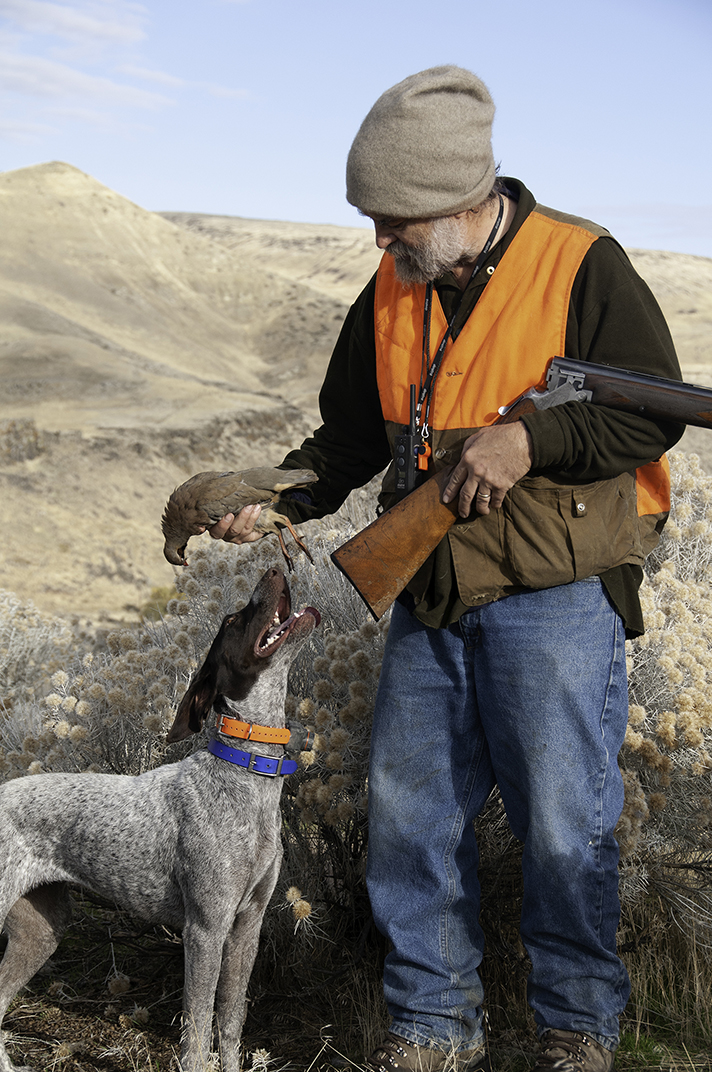
Hunting any of these birds can be challenging at times, and it’s certainly enjoyable, but I don’t think any deserves consideration as the toughest.
We now reach the middle of the pack, birds that, to paraphrase Brando’s character in On the Waterfront,could have been contenders. They are all tough, gratifying, and a lot of fun to hunt, but each in their own way lacks the sharp edge of difficulty needed to make the top of the list.
At the risk of offense (and I am a life member of Pheasants Forever), I’ll start with our most popular and widely distributed gamebird. Ringnecks are big, beautiful, delicious, and a joy to hunt, but they aren’t our most difficult. A lot of classic Midwestern pheasant cover is easy to walk. They aren’t as fast on the wing as several other birds in this discussion. To give them their due, there are important exceptions to these generalizations. Some western pheasant habitat can be demanding, as I’m reminded whenever I spend a day chasing roosters up and down our steep local coulees. Pheasants are the smartest, wiliest birds on this list, and educated late-season ringnecks can drive even experienced hunters to distraction, with shots then are longer, faster, and more difficult than they are during opening week. They are as hard to bring down quickly as any bird under discussion. Finally, they pose more difficulties for dogs at every stage of the game, running out ahead of points and eluding pursuit by the best retrievers. In summary: close, but not quite gold medal level, because of terrain and easy early season shooting.
When, as a kid in upstate New York, I killed the first two ruffed grouse I shot at, my father told me I should quit while I was ahead, and he had a point. I went through a box of shells before dropping my third. The walking was easy unless we were thrashing through brush, and the toughest part of the shooting came from obstructions in the thick cover they inhabit. However, their behavior changes in the Mountain West, where I now live. Perhaps because of limited hunting pressure, here they behave more like fool hens than the noble gamebirds of New England.
Woodcock deserve mention. There isn’t a lot of up and down in most woodcock habitat, although fighting through alders is never easy. Their erratic flight patterns through thick cover make them notoriously difficult to hit. Their willingness to hold points is a wonderful characteristic, but their camouflage and reluctance to flush make them very difficult for hunters without dogs. If you had to climb more hills to hunt them, I’d bump them up to the next level.
Now we reach the Final Four, if you will.
I’ll begin by circling back to the two lesser known ptarmigan species. I’ll consider them together because they share a habitat preference for rugged terrain. Rock ptarmigan prefer exposed rocky slopes at higher elevations than willow ptarmigan. They require more hiking to reach, and the footing is usually difficult once you get there. When I lived in Alaska, I covered a lot of tough miles hunting them. White-tailed ptarmigan live even higher up, and have the distinction of being the only one of the three found in the Lower 48. Friends in Colorado hunt them above the tree line at nose-bleeding elevations. Habitat preference accounts for their high position on my list.
My selection of Huns (properly called gray partridge) among the elite may raise some eyebrows. Their habitat is gentle like that of sharptails, and I commonly encounter both on the same morning. True covey birds, they flush like quail with significant differences. The first covey rise often occurs beyond shotgun range. They usually stay together until the third or fourth rise, which is likely to require a lot of hiking to reach. Huns are masters at disappearing behind terrain features, and hunters may not find them again even with good dogs. Unless the covey has broken up, they offer confusion, high speed, and crazy shot angles, all of which is enough to make me consider them one of our most challenging gamebirds.
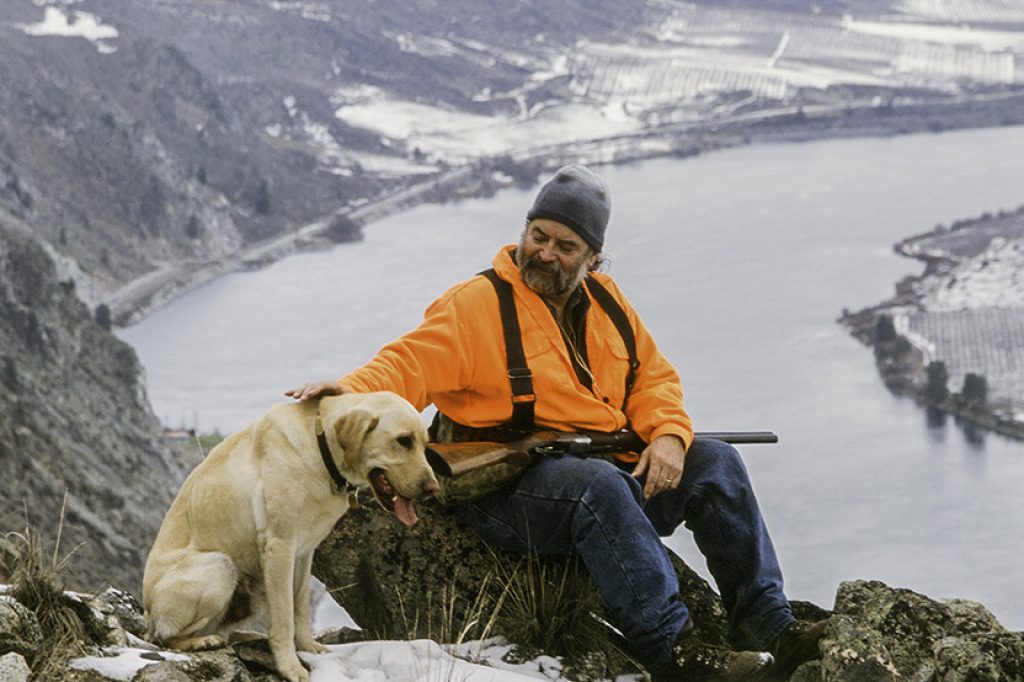
Now on to one I’m sure many readers have already put atop their list. When I first started hunting chukar, I was a fit teenager and hardly noticed how steep their habitat was. My father did, though, and he told me that I would eventually find climbing those hills exhausting. He was right. Chukar hunting reminds me of hunting sheep or mountain goats. Loose rock underfoot invites slipping, sliding, and falling, and I have banged up more knees—and shotguns—hunting chukar than any other bird in the country except the one that follows. There’s nothing easy about the shooting, either, as they streak past overhead at wild angles rarely seen from any other American gamebird. Chukar earn a solid silver medal.
Now—drumroll—on to my pick for the toughest upland bird, even though it will likely be unfamiliar to many readers because of its limited range. Unless you cross the border, Mearns quail hunting is limited to southern Arizona and New Mexico, where they inhabit mountain foothills with thick live oak canopy. I rank them at the top not because of any one challenging characteristic but because of the way they combine several.
While they sometimes occupy grassy, level canyon bottoms, I more often find them on steep, rocky sidehills. While the terrain may not be quite as demanding as chukar country, I rarely reach a dog on point uphill without having to stop for breath, and the rocks hurt just as much when you tumble. Covey rises are as startling and confusing as with Huns, and require the same concentration to isolate one target from many possibilities. To top it off, shooting through the trees reminds me of hunting ruffed grouse in dense cover back East. As I once had to point out to a bewildered visiting friend, if you’re not huffing, puffing, and shooting oak leaves, you’re not shooting Mearns quail.
There you have it–a long string of personal opinions, as acknowledged from the start. Whether the subject is quarterbacks or game birds, there is no way to objectify discussions of this sort, which is one reason they are so much fun. So, discuss the matter with your hunting partners, secure in the knowledge that none of you will ever be wrong.
